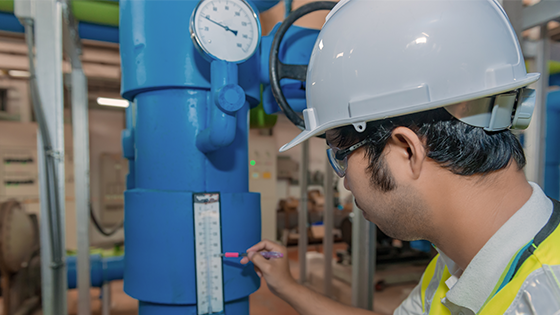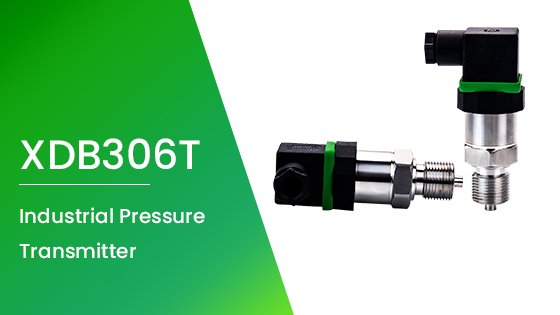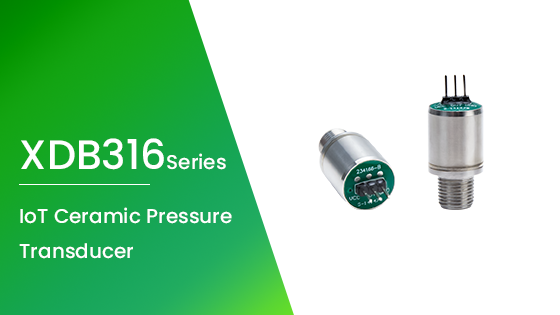Imagine waking up in the morning to find that your coffee machine has already brewed a cup of aromatic coffee based on your wake-up time, the room temperature is adjusted to the most comfortable setting, and even the curtains have automatically opened to let the sunlight gently in. All of this is thanks to the application of Internet of Things (IoT) technology, which connects various household devices via the Internet to achieve an intelligent home experience. This technology is not limited to homes; it is also quietly transforming operations in the industrial sector.
The IoT is gradually changing our world by connecting various physical devices through the internet, enabling real-time data sharing and intelligent management. Among these, pressure sensors play a crucial role as key components in IoT systems. Pressure sensors are devices that convert pressure signals into electrical signals and are widely used in various industrial fields such as manufacturing, oil and gas, and water treatment. These sensors can monitor and report pressure data in real time, ensuring the safety and efficiency of systems.
As IoT technology rapidly advances, traditional pressure sensors are evolving towards intelligence and networking. By integrating pressure sensors with IoT technology, businesses can achieve remote monitoring, data analysis, and intelligent decision-making, improving operational efficiency and safety. Therefore, IoT pressure sensors show great potential and prospects in industrial applications.
This article aims to explore the prospects of IoT pressure sensors in industrial applications. We will conduct a detailed analysis of aspects such as working principles, application scenarios, advantages, market trends, and challenges to help readers fully understand the importance and future development direction of this emerging technology in the industrial sector.

Working Principles of IoT Pressure Sensors
The introduction of IoT technology has greatly expanded and enhanced the functions and applications of traditional pressure sensors. The following are key aspects of the integration of IoT technology with pressure sensors:
- Data Collection and Transmission: IoT pressure sensors are equipped with wireless communication modules such as Wi-Fi, Bluetooth, LoRa, and NB-IoT, enabling them to transmit collected pressure data in real time to the cloud or local servers. Users can access and monitor sensor data in real time through remote devices such as computers and smartphones.
- Data Storage and Processing: Through IoT platforms, collected data can be stored in cloud databases and subjected to big data analysis and processing. Advanced data analysis technologies (such as machine learning and artificial intelligence) can be used to discover patterns in the data and perform predictive maintenance, fault diagnosis, and performance optimization.
- Remote Monitoring and Management: IoT technology allows users to access and manage pressure sensors anytime, anywhere through the network. This not only enhances the system's operability and flexibility but also reduces the need for manual inspections, improving operational efficiency.
- Intelligent Functions: IoT pressure sensors can integrate various intelligent functions such as self-diagnosis, automatic calibration, and linkage control with other smart devices. These functions enable sensors to better adapt to complex industrial environments, providing higher accuracy and reliability.
With the support of IoT technology, pressure sensors can not only achieve real-time monitoring and data collection but also help businesses optimize production processes, enhance safety, and improve operational efficiency through data analysis and intelligent control. This integrated solution shows broad application prospects and tremendous development potential in the industrial sector.
Application Scenarios of IoT Pressure Sensors
IoT pressure sensors have broad application prospects in the industrial sector. Here are brief introductions to several major application scenarios:
- Water Treatment Industry: IoT pressure sensors are used to monitor the pressure of pipes and storage tanks in real-time, ensuring the stable operation of the water supply system, quickly detecting and locating leaks, optimizing pump control, improving energy utilization efficiency, and ensuring the efficient operation of wastewater treatment equipment.

- Oil and Gas Industry: IoT pressure sensors are used to monitor the pressure of oil and gas pipelines in real-time, preventing explosions and leaks, monitoring downhole pressure during drilling operations to ensure safe and efficient drilling, managing tank pressure to prevent overpressure or leaks, and optimizing production processes through pressure data analysis to reduce energy consumption and costs. XIDIBEI's XDB306T Series Industrial Pressure Transmitters meet the high demands of the oil and gas industry, providing reliable pressure monitoring and data analysis.

- Manufacturing and Automation: IoT pressure sensors are used to monitor the pressure status of production equipment in real-time, preventing failures, reducing downtime, achieving automated control of the production process through pressure data, improving production efficiency, ensuring stable product quality, and optimizing the operation of pneumatic systems to reduce energy consumption and improve overall production efficiency. XIDIBEI's XDB316 Series Ceramic Pressure Sensors(https://xdbsensor.com/xdb316-iot-ceramic-pressure-transducer-product/) are specifically designed for the IoT industry, making them suitable for widespread applications in manufacturing and automation.
- Other Potential Industrial Applications: IoT pressure sensors are also widely used in smart buildings, agricultural irrigation, aerospace, and medical equipment to monitor and control system pressure, optimize energy use, and enhance safety and operational efficiency.
IoT pressure sensors play a crucial role in various industrial fields with their high precision and intelligent features, driving the development of industrial automation and intelligence.
Advantages
IoT pressure sensors demonstrate significant advantages in industrial applications:
- Real-time Monitoring and Data Collection: Provides real-time data to help quickly respond to anomalies. Sensors can transmit data in real-time, ensuring that systems can respond promptly to issues, reducing the likelihood of accidents.
- Improved Efficiency and Reduced Costs: By reducing dependence on manual inspections, IoT pressure sensors significantly lower maintenance costs. Automated monitoring systems also enhance overall operational efficiency.
- Predictive Maintenance and Reduced Downtime: Uses data analysis to predict failures and reduce downtime. Real-time data from sensors can be used to establish equipment health models, identifying potential issues early and reducing unexpected failures.
- Data-driven Decision Support: Provides detailed data support to help businesses make more accurate and scientific decisions. By analyzing sensor data, companies can optimize production processes, improve product quality, and enhance operational efficiency.
Market Trends and Development Prospects
The market demand for IoT pressure sensors continues to grow, and it is expected to maintain high growth in the coming years, with continuous technological innovation:
- Current Market Demand Analysis: With the advancement of Industry 4.0 and smart manufacturing, the demand for IoT pressure sensors has significantly increased.
- Future Development Trend Predictions: In the coming years, IoT pressure sensors will continue to develop, with technological innovations driving their application in more fields.
- Major Manufacturers and Product Analysis: Companies like XIDIBEI have contributed innovations in this field, bringing more high-performance IoT pressure sensor products to the market, driving industry development.
Challenges and Solutions
Despite the broad application prospects of IoT pressure sensors, they still face some challenges:
- Data Security and Privacy Issues: Strengthening data encryption and security measures is necessary to ensure data security during transmission and storage.
- Device Interoperability and Standardization: Promoting industry standardization to improve compatibility and interoperability between different devices, ensuring the overall system's collaborative work.
- Network Coverage and Connection Stability: Enhancing network infrastructure to ensure stable connections. The stable operation of IoT systems relies on reliable network connections, necessitating continuous improvement of network coverage and stability.
Conclusion
IoT pressure sensors have broad prospects in industrial applications. With the development of technology and increasing market demand, this field will continue to innovate, bringing more efficient and intelligent solutions to various industries. In the future, IoT pressure sensors will play an important role in more industrial scenarios, driving further development of industrial automation and intelligence.
Post time: Jul-08-2024

